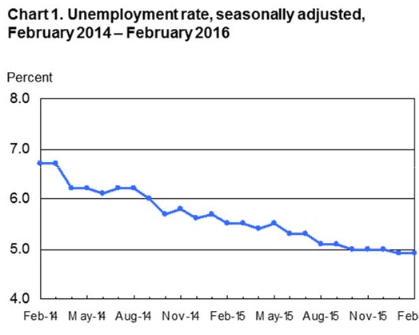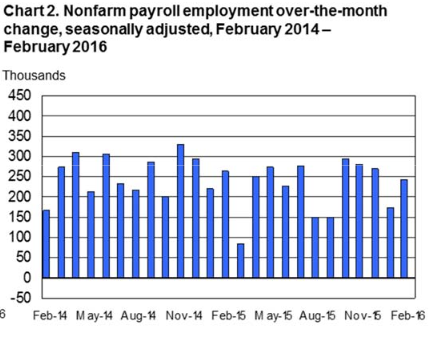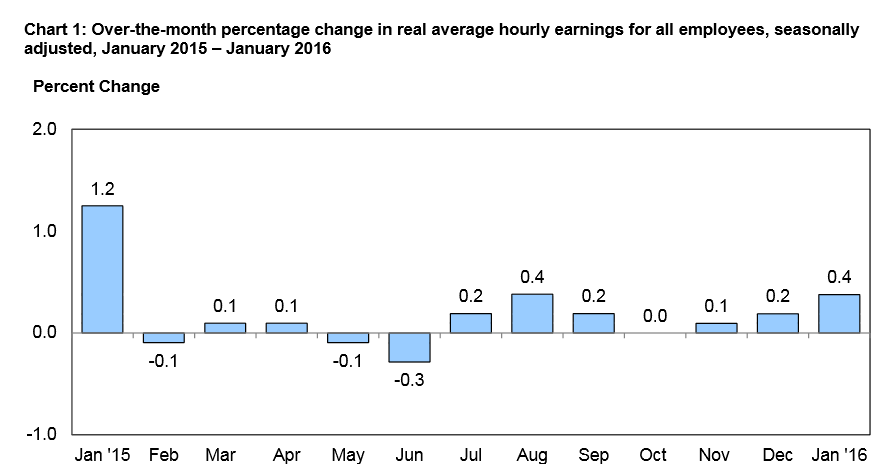Employment Blog March 2016
This employment report is taken the U S Department of Labor, Bureau of Labor Statistics monthly report. Nonfarm payroll employment increased by 242,000 in February, and the unemployment rate held at 4.9 percent. Job growth occurred in health care and social assistance, retail trade, food services and drinking places, and private educational services. Mining employment continued to decline. Incorporating revisions for December and January, which increased non-farm payroll employment by 30,000, monthly job gains have averaged 228,000 over the past 3 months. In the 12 months prior to February, employment growth averaged 225,000 per month. This information is detailed in Chart 1 and 2.
Employment in health care and social assistance rose by 57,000 in February. Health care added 38,000 jobs over the month. Within health care, employment increased by 24,000 in ambulatory care services (which includes offices of physicians and home health care) and by 11,000 in hospitals. Employment in hospitals has increased by 181,000 over the past year. The social assistance industry added 19,000 jobs in February, mostly in individual and family services (+14,000).
Retail trade added 55,000 jobs in February. Job gains occurred in food and beverage stores (+15,000) and other general merchandise stores (+13,000). Employment in retail trade increased by 339,000 over the past year. Employment in food services and drinking places rose by 40,000 in February. Over the past 12 months, the industry has added 359,000 jobs.
Employment in private educational services rose by 28,000 in February, after edging down in January (-20,000).
Construction employment continued to trend up in February (+19,000) and has increased by 253,000 over the past year. In February, residential specialty trade contractors added 14,000 jobs; this industry accounted for about half of the job growth in construction over the past year.
In February, employment in professional and business services changed little for the second month in a row. In 2015, the industry added an average of 52,000 jobs per month. Within the industry, employment in professional and technical services continued to trend up over the month (+18,000), while the number of jobs in temporary help services was little changed.
Mining employment fell by 19,000 in February, with most of the decline in support activities for mining (-16,000). Since a recent peak in September 2014, employment in mining has decreased by 171,000, or 20 percent. More than three-fourths of the job losses over this period occurred in support activities for mining.
Real average hourly earnings increased 1.1percent, seasonally adjusted, from January 2015 to January 2016. This increase in real average hourly earnings combined with no change in the average workweek resulted in a 1.2 percent increase in real average weekly earnings over this period. Real wage changes of this period are detailed in Chart 1a below.



